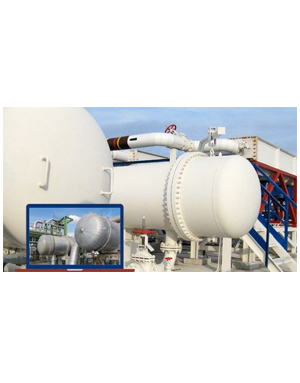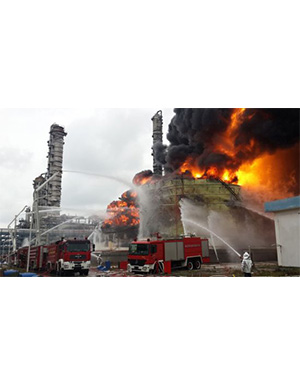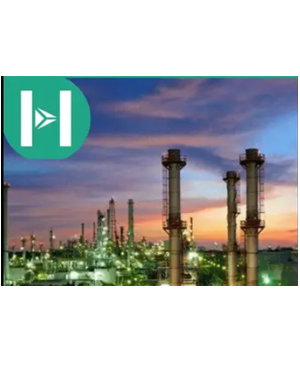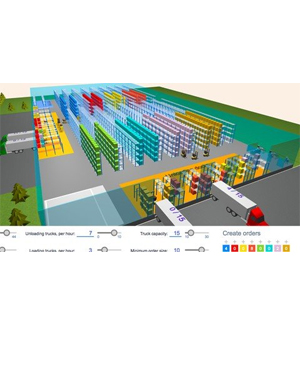Download Heat Exchanger Design: Selection, Calculation and Simulation Course
Heat Exchanger Design: Selection, Calculation and Simulation video course udemy download and Masterclass training of Shell and Tube Heat Exchanger, Simulation using advanced simulation tool HTRI software. Process Design and Simulation Software is a type of computer software that is used in engineering and industry to model, analyze, and optimize various processes inside a system. These tools are very useful in chemical engineering, manufacturing, and other industries that use complex processes. Process Design and Simulation Software includes Aspen Plus, COMSOL Multiphysics, and Simulink. These tools are critical for minimizing the time and costs involved with physical prototyping, allowing engineers to iteratively improve and optimize processes in a virtual environment before applying them in the real world.
What you’ll learn
- Basic principles of heat exchanger design, Factors that affect heat transfer. Fouling factors
- Geometry selection for shell and tube exchanger
- Shell and tube heat exchangers: TEMA classifications, Tubes, Other exchanger components, Factors that affect heat transfer
- Heat exchanger operating parameters and problems, Energy conservation overview and methods
- Selection of heat exchanger type: Shell and Tube, Plate and Frame, Spiral, Air Coolers
Reviewing vendor options - Introduction to dynamic simulation, what is Pressure Flow Theory?
- Demonstration of strip charts i.e. how to configure strip charts, how to change logger size and how to read strip charts.
- Application of dynamic simulation
- Example demonstration with hypothetic flow sheet to configure all basic control system like flow control system, level control system, pressure control system
- Here are the primary features of Process Design and Simulation Software:
Modeling: With these software tools, engineers can develop detailed mathematical models of physical processes. This includes specifying the system’s components, interactions, and overall process dynamics.
Simulation: After building a model, simulation software allows engineers to conduct virtual experiments. This entails applying the model to forecast how the actual system will react under certain scenarios. This virtual simulation aids in analyzing the system’s functioning, detecting potential problems, and adjusting parameters.
Analysis: Engineers can use simulation data to obtain insight into the system’s efficiency, safety, and overall performance. This analysis may include investigating variables such as temperature, pressure, flow rates, and other pertinent characteristics.
Optimization: Process Design and Simulation Software frequently include optimization capabilities. Engineers can use these tools to determine the optimal set of operating conditions or design parameters for increasing efficiency, lowering costs, or achieving other specific goals.
Visualization: These technologies often show visual representations of simulated processes. Graphs, charts, and 3D models help engineers and stakeholders comprehend the system’s behavior.
Key aspects of heat exchanger process design include:
- Fluid Selection
- Temperature and Pressure Requirements
- Heat Transfer Area
- Flow Configuration
- Material Selection
- Geometry and Design Parameters
- Thermal Performance Optimization
- Cost Considerations
- Regulatory Compliance
Software for Heat Exchanger Design
HTRI (Heat Transfer Research, Inc.)
HTRI is a leading provider of software and services for heat exchanger design and analysis. Xchanger Suite includes tools for process simulation, thermal design, mechanical design, and rating of various types of heat exchangers.
Aspen Exchanger Design & Rating (EDR):
Aspen EDR is part of the Aspen HYSYS process simulation software suite. It provides capabilities for the design and rating of heat exchangers, including shell and tube, air coolers, and plate-fin exchangers.
After Heat Exchanger course you will be able to do?
- Understanding of Heat Transfer Principles
- Knowledge of Heat Exchanger Types and Applications
- Fluid Flow and Thermodynamics Understanding
- Selection of Suitable Materials
- Knowledge of Industry Standards and Codes
- Computer-Aided Design (CAD) and Simulation
- Problem Solving and Troubleshooting
- Project Management Skills
- Awareness of Energy Efficiency
- Safety and Environmental Considerations
Overall, a heat exchanger design course provides students with a comprehensive skill set that is valuable in industries such as chemical processing, oil and gas, power generation, HVAC, and more. Whether working in engineering, design, or operations, individuals with expertise in heat exchanger design are essential to ensuring efficient and safe thermal processes.
Dynamic Simulation
Dynamic Simulation for chemical engineers using advanced simulation tools
Welcome to our advanced Dynamic Simulation course using Aspen-HYSYS / Aspen-Plus/ Unisim
Course content
- Section 1: Introduction
- Lecture 1 Introduction
- Lecture 2 Primary Process Function of Heat Exchanger
- Lecture 3 Codes & Standards and Aim of Heat Exchanger
- Lecture 4 Why Shell and Tube Heat Exchanger
- Section 2: TEMA Standards
- Lecture 5 TEMA class of Heat Exchanger
- Lecture 6 TEMA Terminology
- Lecture 7 Selection Consideration: Stationary Heads, Shell Design and Rear Ends
- Section 3: Software Exposure
- Lecture 8 HTRI Calculation
- Lecture 9 Allocation of Sides for Fluids
- Lecture 10 Hot and Cold Fluid Properties
- Lecture 11 Geometry
Course details
- Movie quality: MP4 | Video: h264, 1280 × 720
- Audio quality: Audio: AAC, 44.1 KHz, 2 Ch
- Movie duration: 0h 49m
- Number of lessons: 04 sections, 11 lectures
- Language: English
- Compressed file size: 240 MB




